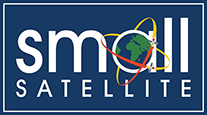Session
Session I: Year in Review-Enterprise
Location
Salt Palace Convention Center, Salt Lake City, UT
Abstract
The Electrojet Zeeman Imaging Explorer (EZIE) is a low-cost, multi-spacecraft mission that seeks to capture the magnetic signature of the powerful electrojet currents flowing within the Earth's upper atmosphere. Equipped with the innovative Microwave Electrojet Magnetogram instrument, three identical 6U CubeSats fly in a "pearls-on-a-string" configuration in sun-synchronous, low Earth orbit, crossing the auroral oval over 8,000 times during its 18-month lifetime. As a NASA-sponsored, Category 3, Risk Classification D mission, EZIE accommodates a higher-risk tolerance and moderate budget while offering a substantial return in science. In less than 40 months of development, the project managed the convergence of sponsor policies, program standards and commercial methods while compiling many lessons learned that will serve as a blueprint to the benefit of future, similarly scoped projects.
This paper offers a reflection on EZIE's innovative approach to mission development from high-concept proposal to launch, delving into the balance between legacy- and forward-facing processes achieved through adaptability, strategic problem-solving and cooperation with mission affiliates. The valuable insights offered into this delicate interplay combined with the EZIE’s groundbreaking approach to answering longstanding questions about these mysterious Earth-space exchanges reinforce the mission’s unique contribution to the realm of space exploration.
Document Type
Event
Navigating the EZIE Path: Insights From a CubeSat's Trailblazing Journey Through NASA Mission Development
Salt Palace Convention Center, Salt Lake City, UT
The Electrojet Zeeman Imaging Explorer (EZIE) is a low-cost, multi-spacecraft mission that seeks to capture the magnetic signature of the powerful electrojet currents flowing within the Earth's upper atmosphere. Equipped with the innovative Microwave Electrojet Magnetogram instrument, three identical 6U CubeSats fly in a "pearls-on-a-string" configuration in sun-synchronous, low Earth orbit, crossing the auroral oval over 8,000 times during its 18-month lifetime. As a NASA-sponsored, Category 3, Risk Classification D mission, EZIE accommodates a higher-risk tolerance and moderate budget while offering a substantial return in science. In less than 40 months of development, the project managed the convergence of sponsor policies, program standards and commercial methods while compiling many lessons learned that will serve as a blueprint to the benefit of future, similarly scoped projects.
This paper offers a reflection on EZIE's innovative approach to mission development from high-concept proposal to launch, delving into the balance between legacy- and forward-facing processes achieved through adaptability, strategic problem-solving and cooperation with mission affiliates. The valuable insights offered into this delicate interplay combined with the EZIE’s groundbreaking approach to answering longstanding questions about these mysterious Earth-space exchanges reinforce the mission’s unique contribution to the realm of space exploration.


